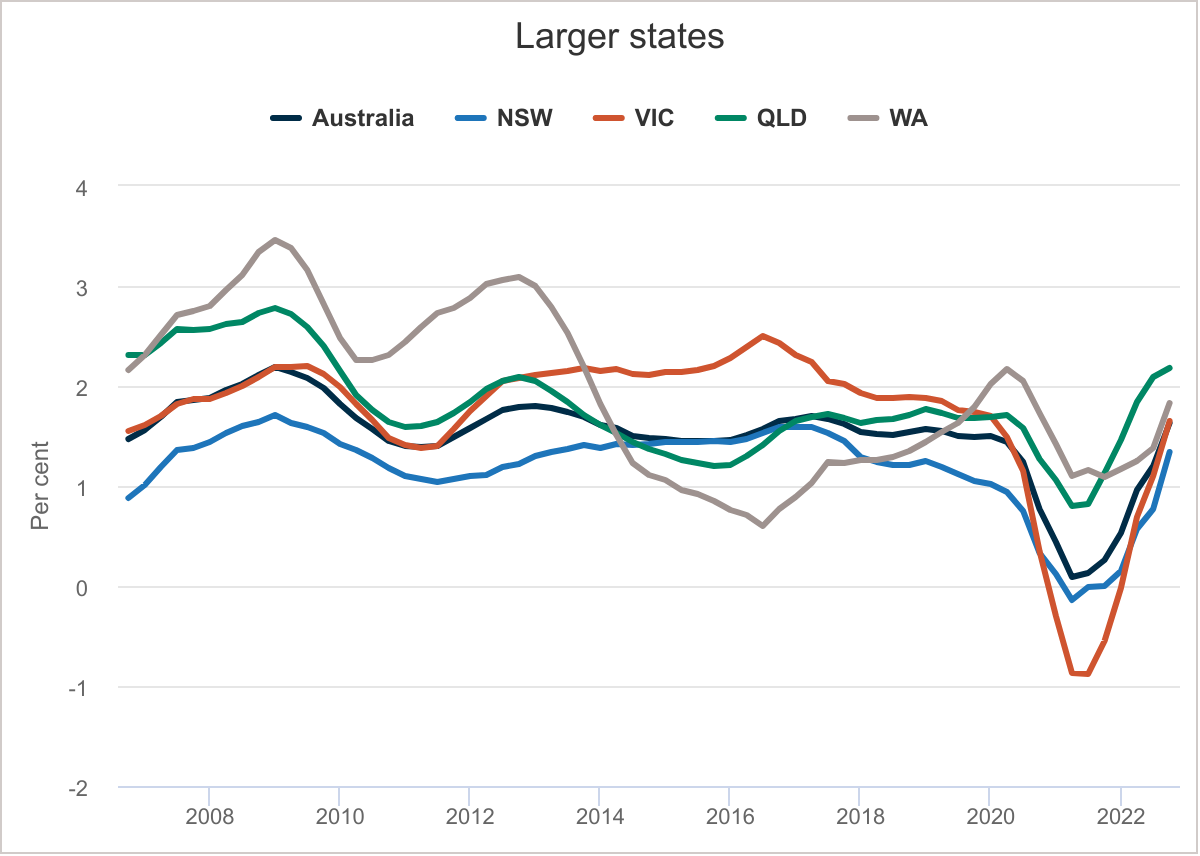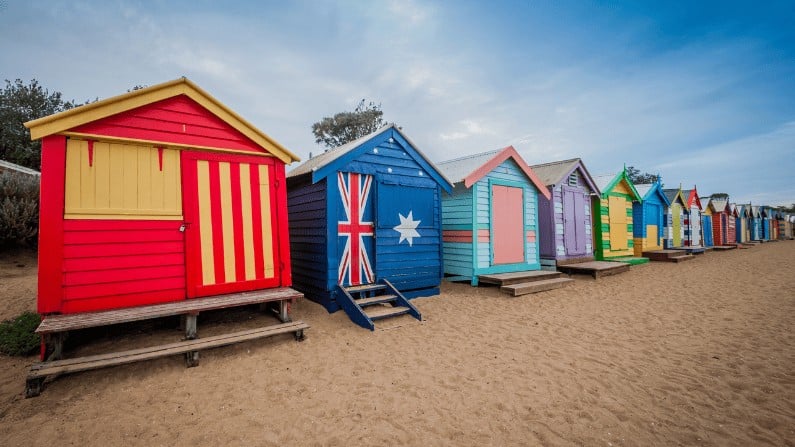We are often asked when is the best time to buy in the market?
And surely the simple answer would be – buy when the market is at the bottom and sell when it is at the top. The problem can be sometimes the best time to buy in the market is not always the easiest time to buy in the market. The real estate cycle has four distinct phases; the boom, the downturn, the stabilisation, and the upturn.
And in response to rising living expenses, interest rate rises, and other external pressures, price growth has softened at the macro level as borrowing capacities have lowered due to the increase in the cost of money. However, in response to market activity and doom-and-gloom news stories many potential vendors are opting to delay listing their properties and the supply of quality real estate in Melbourne remains low. Demand is exceeding supply for these properties and hopeful buyers are having to fight it out to secure them.
We are now starting to hear talk in the media about the Melbourne market being on the cusp of an upturn and with REIV data revealing that at the end of March 553 suburbs around the state are in the black and experiencing growth it is looking more than likely.
So why has Melbourne remained so resilient during this time and why should investors buy now?
1. Victoria is currently clawing its way back to being Australia’s fastest-growing state
During the pandemic, our international borders closed and overseas migration ground to a halt. And at the same time, Melbourne, as one of the most lockdown cities in the world experienced higher than normal interstate departure migration.
However, since the reopening of our national borders, overseas migration has returned Victoria’s annual population growth to growth rates seen just prior to the pandemic. Interstate departure numbers have also returned to pre-pandemic levels. In fact, at the end of the September 2022 quarter we experienced the lowest departure levels since the September 2016 quarter.
Overseas migration levels are sensitive to changes in policy or economic conditions, and with the Albanese Federal Government increasing the number of permanent migration visas available in 2022-23 we expect to see continued growth in overseas migration and with the lifestyle and education opportunities available in Victoria, we will remain an attractive destination.

Population Growth Larger States. Source: Centre for Population
2. A strong rental market means lows vacancy rates and high yields
You would have to be living under a rock if you did not realise that Australia was currently in a rental crisis. Tenants are struggling to find affordable accommodation in our capital cities, with some submitting 100s of applications to be successful in leasing a property.
According to CoreLogic the vacancy rate across the combined capitals fell to a new record low of 0.9% in March and Melbourne’s vacancy rate sits even lower than that at 0.7%. This tight rental market, where demand is outstripping supply by a considerable amount has seen rents rise 10.8% in Melbourne over the last 12 months, and we expect rental prices to continue rising whilst rental properties supply remains low.
There is a real opportunity for investors to enter the market and provide quality rental accommodation whilst achieving a healthy rental yield which can buffer them from the impact of interest rate rises to date.
3. Endless options and diversity in stock
A state that has 2.5 million dwellings (Census 2021) and a city (Greater Melbourne) that has over 1000 suburbs is rich in diversity of location, lifestyle, and housing types available. And no matter your property or financial goals there is a property for every investor’s needs.
Now we are not saying that every house, unit, or apartment is A-grade investment material, but whether you are seeking land, location, growth, high rental yields or opportunities to redevelop or add value, there is a match for you.
And to bust a myth, you do not need to be rich to invest in Melbourne!
For example, there are some great suburbs in the west of Melbourne such as Hoppers Crossing and Werribee where we are securing A-grade property for investors with budgets of $500k or less. Or if you prefer to be a little closer to the city, you can buy apartments in boutique complexes that provide great access to the CBD with strong rent returns. Alternatively, you can even go regional and buy in areas like Geelong, Ballarat or Bendigo which continue to provide excellent opportunities and very good rental yields.
4. Capital Growth over the long term
We are often asked “is now the right time to buy” and whilst we might all love the idea of buying at the bottom of the property cycle, it is important to remember:
“The best time to buy was yesterday” and “It is not about timing the market it is about time in the market.”
And it all comes down to compounding capital growth. Compounding growth over a period of years will see the value of your property increase exponentially. Have a look at the chart below to see what different growth rates can achieve for a $500,000 property over 10 years. The right property could double or triple in value!

The REIV released its Quarter 1 results for 2023, and in the last 12 months, there were many suburbs demonstrating their resilience and achieving growth in a stablising market, as evidenced in the tables below.
Houses
| SUBURB | MEDIAN HOUSE PRICE | 12-MONTH GROWTH |
| Hopper Crossing | $627,500 | 2.7% |
| Roxburgh Park | $666,000 | 2.6% |
| Sunbury | $702,000 | 8.1% |
| Frankston South | $1,160,000 | 3.4% |
| Kew | $2,752,000 | 6.7% |
Units
| SUBURB | MEDIAN HOUSE PRICE | 12-MONTH GROWTH |
| Hawthorn | $560,000 | 1.9% |
| North Melbourne | $578,000 | 8.1% |
| Armadale | $610,000 | 2.5% |
| Toorak | $1,295,000 | 2.2% |
| Brighton | $1,398,000 | 8.5% |
Remember this is growth in the last 12 months ending March 2023. In a period where the media and so-called experts continually reported doom and gloom across the board. And if you drill down even further into the results, there are suburbs showing excellent growth in the last quarter alone. Brighton and Templestowe houses both enjoyed 23.2% growth and Glen Waverly and Ormond units enjoyed 22.0% and 33.1% growth, respectively.
5. The world’s most livable city
It can be said we are living in the past, but I prefer to think of it as planning for the future.
Melbourne has won the title the “world’s most livable city” more times than any other city in the Global Livability Index by the Economist Intelligence Unit. The title is awarded to the global city with the highest score for stability, healthcare, culture and environment, education, and infrastructure.
Whilst we have been knocked off our perch, in large part to being the most lockdown city in the last survey, we still achieved a perfect score for education (100/100) and infrastructure (100/100) and scored highly for culture and environment (98.6/100) and stability (95/100) achieving a top 10 position.
We are an attractive lifestyle destination bolstered by the fact we are home to many major industries, including finance, technology, healthcare, tourism, hospitality, and entertainment. We have the second-largest job market in the country and combined with our excellent tertiary education opportunities we are an attractive destination for Australians and overseas migrants.
Melbourne truly has the markers for long-term sustained growth and not a quick flash-in-the-pan one-term growth.
If you are in the market to buy an investment property, then do so now before the market does bounce back and you find yourself trying to buy in a considerably stronger market.
The right property in the right location should see you enjoying many years of compounding growth whilst achieving a healthy rental yield with little vacancy time between tenancies.

